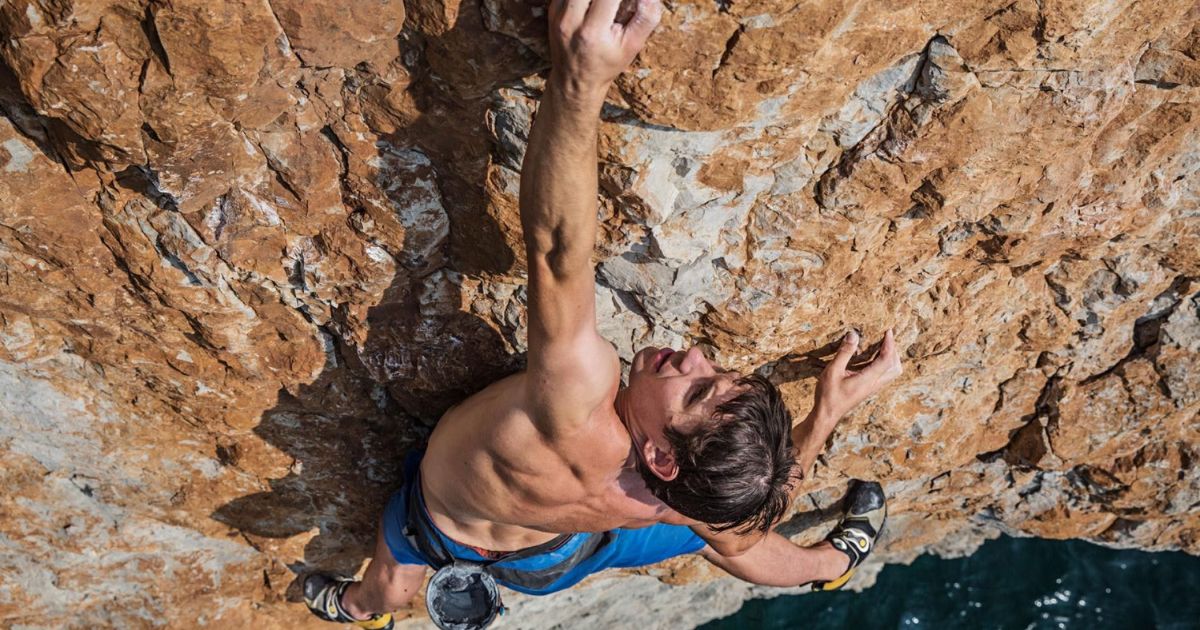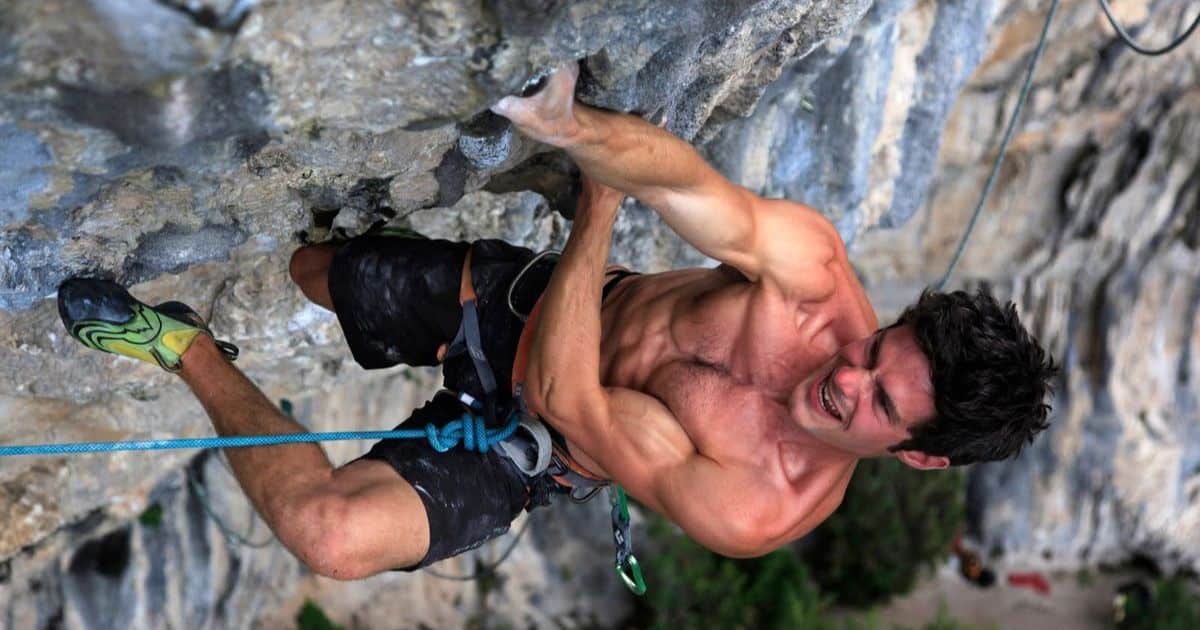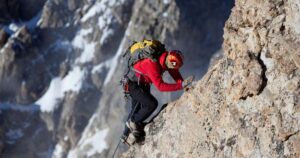Rock climbing, a physical activity resembling a dance with gravity, not only challenges our strength and agility but also impacts our calorie burn. Understanding the science behind calorie expenditure during this exhilarating sport is essential for those seeking to optimize their workouts. In this article, we explore the factors that influence calorie burn, compare it to other activities, and delve into the calorie burn rates for different rock climbing techniques. Get ready to ascend to new heights and discover how many calories you can torch while scaling those cliffs.
Key Takeaways
- Calorie burn in rock climbing is influenced by factors such as intensity, duration, body weight, and fitness level.
- Rock climbing can burn up to 800 calories per hour, making it a highly demanding activity that engages multiple muscle groups.
- Rock climbing requires high intensity and engages both upper body muscles and lower body endurance, offering a full-body workout for weight loss and overall fitness.
- Different rock climbing techniques have varying calorie burn rates, with bouldering burning the most calories at approximately 400-600 calories per hour, and top roping burning the least at approximately 200-300 calories per hour.
The Science of Calorie Burning
The Science of Calorie Burning can be measured by understanding the quantifiable determinants of energy expenditure during rock climbing. Calorie burn calculation is a crucial aspect of studying metabolism and calorie burning. Metabolism refers to the chemical processes that occur within a living organism to maintain life. During rock climbing, the body utilizes energy to perform physical movements, which in turn burns calories.
The amount of calories burned depends on various factors such as the intensity and duration of the activity, the individual’s body weight, and their fitness level. To accurately calculate calorie burn during rock climbing, one must consider these factors and apply appropriate formulas. Understanding the science behind calorie burning in rock climbing provides valuable insights for individuals seeking to optimize their workouts and achieve their fitness goals. Moving forward, let’s explore the factors that can affect calorie expenditure during this exhilarating activity.
Factors Affecting Calorie Expenditure
Factors affecting calorie expenditure during rock climbing include the intensity of the activity, duration of the climb, individual’s body weight, and fitness level. These factors play a significant role in determining the number of calories burned during a climbing session.
- The intensity of the activity: The more challenging the climb, the higher the calorie burn. Difficult routes that require more strength and endurance will result in a greater expenditure of energy.
- Duration of the climb: The longer the climb, the more calories you will burn. Climbing for extended periods of time increases the overall energy expenditure.
- Individual’s body weight: Body weight affects metabolism and the amount of energy needed for physical activities. Heavier individuals tend to burn more calories due to the increased effort required to move their bodies.
- Fitness level: A person’s fitness level directly influences their calorie burn. Fitter individuals have a higher aerobic capacity and can sustain higher-intensity climbs, resulting in greater calorie expenditure.
Understanding these factors can help climbers tailor their workouts to maximize calorie burn and achieve their fitness goals.
Calorie Burn Comparison: Rock Climbing Vs. Other Activities
When comparing calorie burn between rock climbing and other activities such as running, it is important to consider the intensity and duration of the exercise. Rock climbing is a highly demanding physical activity that engages multiple muscle groups, requiring significant strength and endurance. Studies have shown that rock climbing can burn up to 800 calories per hour, making it a highly efficient form of exercise for calorie expenditure. In comparison, running at a moderate pace burns approximately 600 calories per hour.
Rock Climbing Vs. Running
Rock climbing and running can be compared in terms of calorie burn. While both activities offer cardiovascular benefits, there are certain factors that make rock climbing a unique and challenging exercise. Here are four key points to consider when comparing the calorie burn of rock climbing and running:
- Intensity: Rock climbing requires a combination of upper-body strength and lower-body endurance, making it a high-intensity workout. Running, on the other hand, primarily focuses on lower body endurance.
- Muscle engagement: Rock climbing engages a wider range of muscles, including those in the arms, core, and back, leading to a higher calorie burn compared to running, which primarily targets the lower body muscles.
- Technique: Rock climbing techniques such as gripping, balancing, and climbing different surfaces require additional energy expenditure, increasing the overall calorie burn.
- Variety: Rock climbing offers a variety of challenges, such as bouldering, sport climbing, and traditional climbing, which can vary in intensity and calorie burn. This variety keeps the workout exciting and helps to prevent boredom.
Calorie Burn Benefits
Comparing the calorie burn benefits of rock climbing to other activities reveals its unique advantages and potential for high-intensity workouts. Many people believe in calorie burn myths, such as the idea that cardio exercises like running are the best for weight loss. However, rock climbing offers a different approach that can help overcome weight loss plateaus. Rock climbing engages multiple muscle groups simultaneously, leading to a higher calorie burn compared to traditional cardio exercises.
Additionally, the intensity and duration of a rock climbing session can be adjusted to meet individual fitness goals. This makes it an effective workout for both beginners and experienced climbers looking to challenge themselves. With its combination of strength, endurance, and mental focus, rock climbing provides a full-body workout that can contribute to weight loss and overall fitness. Transitioning into the next section, let’s explore the calorie burn rates for different rock climbing techniques.
Calorie Burn Rates for Different Rock Climbing Techniques
The calorie burn rates vary across different techniques used in rock climbing. The intensity and duration of the climb, as well as the muscle groups involved, influence the number of calories burned. Here are four rock climbing techniques and their estimated calorie burn rates:
- Bouldering: This technique involves climbing short but difficult routes without the use of ropes. It requires explosive power and strength, resulting in a high-calorie burn rate of approximately 400-600 calories per hour.
- Sport Climbing: Sport climbing involves climbing routes with the use of ropes and protection. It combines both strength and endurance, leading to a calorie burn rate of around 300-500 calories per hour.
- Traditional Climbing: Traditional climbing is similar to sport climbing but with the added challenge of placing one’s own protective gear. This technique requires more skill and mental focus, resulting in a calorie burn rate of about 250-400 calories per hour.
- Top Roping: In top roping, climbers are secured by a rope from above. This technique is suitable for beginners and has a lower intensity, resulting in a calorie burn rate of approximately 200-300 calories per hour.
Understanding the calorie burn rates of different rock climbing techniques can help climbers plan their rock climbing nutrition and ensure they get adequate rest and recovery to support their training and performance.
How to Maximize Calorie Burn During Rock Climbing
To optimize calorie burn during rock climbing, climbers can employ various strategies. One of the most effective ways to maximize endurance and calorie burn is to focus on proper nutrition. Consuming a well-balanced diet that includes sufficient carbohydrates, proteins, and healthy fats is crucial for providing the energy needed during climbing sessions.
Carbohydrates serve as the primary source of fuel, while proteins aid in muscle repair and recovery. Including lean meats, whole grains, fruits, and vegetables in one’s diet can help maintain energy levels and support muscle function. Additionally, staying well-hydrated is essential for optimal performance and calorie burn. Proper nutrition not only enhances endurance but also improves the overall climbing experience by reducing fatigue and enhancing recovery.
Tips for Tracking and Monitoring Calorie Burn
Tracking and monitoring calorie burn is essential for individuals who want to effectively manage their fitness goals. By keeping a detailed record of the calories burned during rock climbing sessions, climbers can gain insights into their progress and make necessary adjustments to their training regimen. Additionally, monitoring calorie burn allows climbers to evaluate the effectiveness of different climbing techniques and equipment, helping them optimize their performance and achieve their desired results.
Effective Calorie Tracking
For accurate and efficient monitoring of calorie burn during rock climbing, it is essential to employ effective methods of calorie tracking. Here are four tips to help you effectively track and monitor your calorie burn:
- Use a fitness tracker: Invest in a reliable fitness tracker that can accurately measure your heart rate and track your activity levels. This will give you a more accurate estimate of the calories burned during your rock climbing sessions.
- Utilize calorie tracking apps: There are numerous smartphone apps available that can help you track your calorie intake and expenditure. These apps often have extensive databases of different activities, including rock climbing, making it easier for you to monitor your progress.
- Keep a food diary: Maintaining a record of your daily food intake can help you understand your calorie consumption and make adjustments accordingly. This will enable you to create a calorie deficit, essential for effective weight loss.
- Consult a professional: Seeking guidance from a registered dietitian or certified personal trainer can provide you with personalized advice and help you develop a customized calorie-tracking plan.
Monitoring Progress and Results
How can you effectively monitor your progress and results when it comes to tracking and monitoring calorie burn during rock climbing? Tracking progress and measuring results are essential for assessing the effectiveness of your rock climbing workouts. One way to monitor your progress is by keeping a record of the duration and intensity of each climbing session. You can use a fitness tracker or a mobile app specifically designed for rock climbing to track the number of calories burned.
Additionally, maintaining a training log can help you evaluate your performance over time and identify areas for improvement. By regularly reviewing your progress and measuring the results, you can adjust your training plan accordingly and set new goals to challenge yourself further. Remember, consistency in tracking and monitoring is key to achieving your desired rock climbing outcomes.
Frequently Asked Questions
Can Rock Climbing Help With Weight Loss?
Rock climbing can be an effective form of exercise for weight loss due to its ability to build muscle and increase cardiovascular endurance. Additionally, mental challenges and a sense of accomplishment can positively impact mental health and well-being.
Is Indoor Rock Climbing as Effective for Calorie Burning as Outdoor Rock Climbing?
Indoor and outdoor rock climbing offers similar benefits for fitness, including cardiovascular and muscular strength. While outdoor climbing may offer more varied terrain and natural elements, both forms can effectively burn calories and contribute to weight loss.
What Are Some Common Mistakes That Can Prevent You From Maximizing Calorie Burn During Rock Climbing?
To optimize calorie burning during rock climbing, it is essential to avoid common mistakes. These mistakes include improper technique, lack of warm-up, inadequate hydration, and neglecting to vary the intensity of climbs. By addressing these factors, you can maximize your calorie burn potential.
Are There Any Specific Dietary Considerations for Rock Climbers Looking to Optimize Calorie Burn?
When it comes to optimizing calorie burn during rock climbing, there are specific dietary considerations to keep in mind. This includes understanding your specific dietary requirements and choosing the best pre-workout snacks to fuel your body efficiently.
Can the Intensity of Rock Climbing Affect the Number of Calories Burned?
The duration of rock climbing directly impacts calorie burn, with longer sessions leading to greater expenditure. Additionally, the type of rock climbing, such as bouldering or traditional climbing, can also impact calorie expenditure due to variations in intensity and muscle engagement.
Conclusion
In conclusion, rock climbing is a highly effective activity for burning calories due to its combination of cardiovascular and strength-based demands. The calorie burn rate during rock climbing varies depending on factors such as body weight, climbing technique, and intensity level. By incorporating techniques such as bouldering and lead climbing, individuals can maximize their calorie expenditure. It is important to track and monitor calorie burn to optimize training sessions and achieve fitness goals. Rock climbing can be likened to a furnace, melting away calories and sculpting a stronger body.










